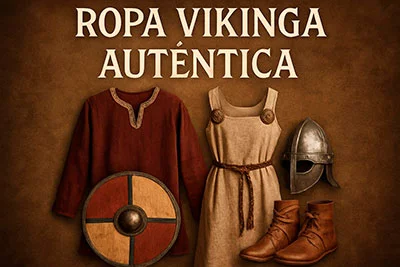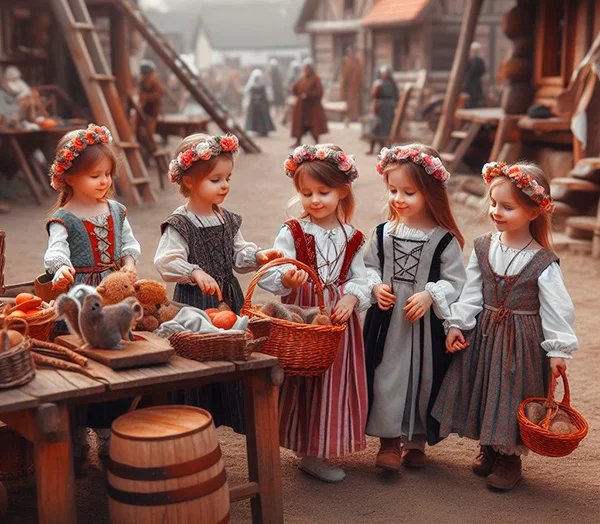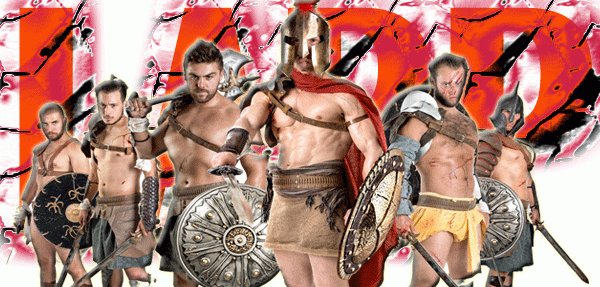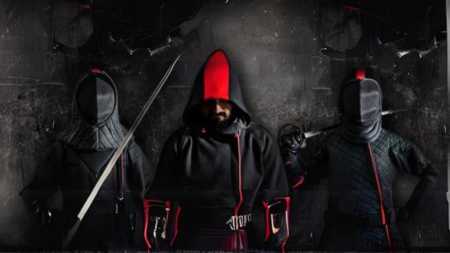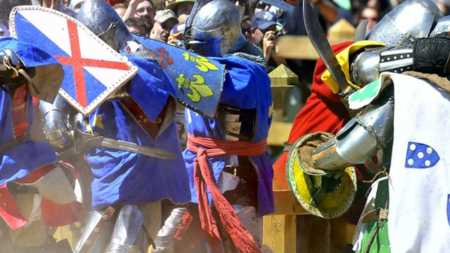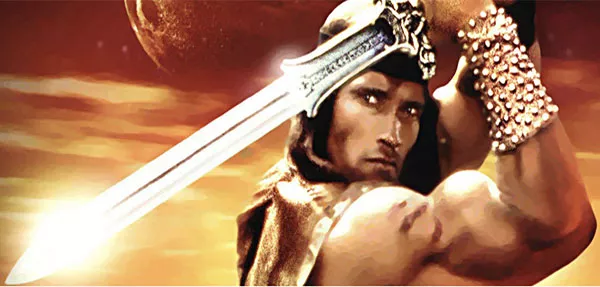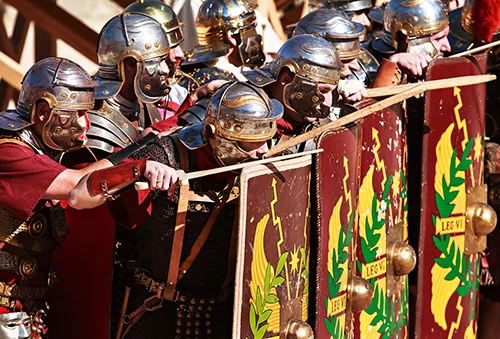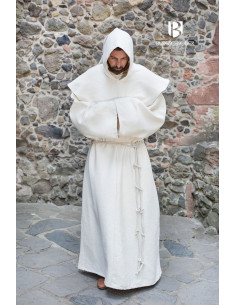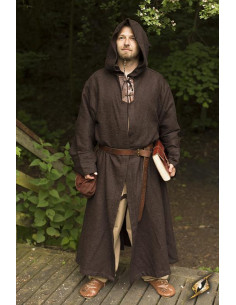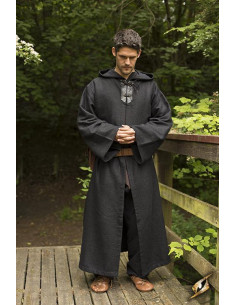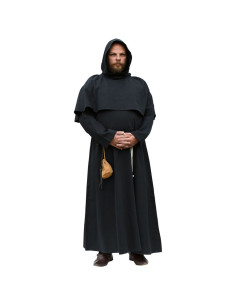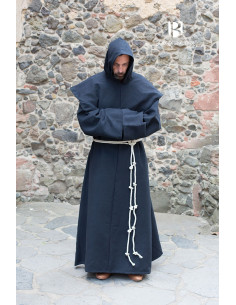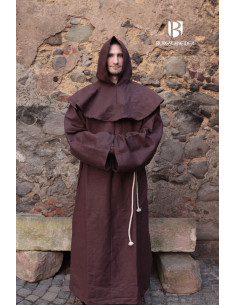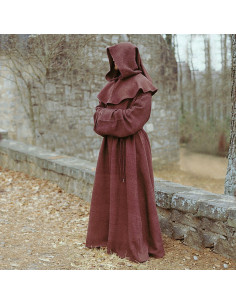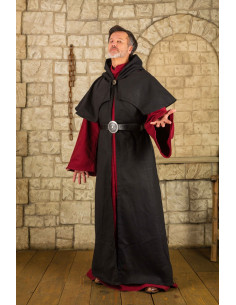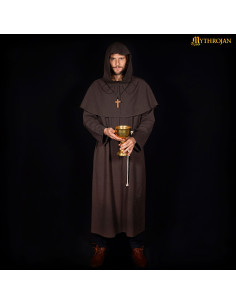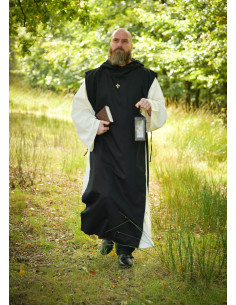Monk Robes
The History and Meaning of Monk Robes
Monk robes have a deep history that dates back centuries, reflecting religious traditions and monastic lifestyles. From the medieval black Benedictine monk tunics to the garments worn by Capuchin friars or Franciscan monks, each design has its own symbolic and functional meaning, representing spiritual commitment and humility.
These habits not only serve as clothing, but also communicate the religious identity of the priest, friar, or nun who wears them. The simplicity in materials and cuts highlights detachment from the material world, while the frequent presence of a belt reinforces the austerity characteristic of religious fashion in different orders, also adapting to various climates and needs.
Variety and Styles in Medieval Monk Robes
The category of monk robes includes a wide range of styles, such as the medieval Benedikt cogulla and the medieval monk tunic and hood, garments that combine tradition with comfort. For example, the medieval brown Benedictine monk tunic or the medieval monk Benediktus robe in white or black have distinctive features adapted to each order and era.
Additionally, the current market offers models like the Brother Cadfael monk robe or the Carthusian monk habit, ideal not only for religious uses but also for those seeking to dress with an accurate medieval aesthetic for cosplay or historical events. The hood, a recurring element, adds functionality and authenticity to these garments, reinforcing their medieval hooded appearance.
Monk Robes in Contemporary Fashion and Use
The influence of monk robes transcends strictly religious contexts, incorporating into fashion and cosplay. Black or brown medieval tunics are popular for historical reenactments and costume collections, showing how the medieval friar is an iconic figure in popular culture.
Moreover, religious fashion related to these habits, including garments for Buddhist monks and Franciscan friars, demonstrates the cultural richness in their design. The use of the belt is a detail that adds versatility to the garment, allowing personalized adjustments that contribute both to aesthetics and functionality, always respecting the traditions these robes represent.
Materials and Characteristic Details of Monk Robes
The materials used for monk robes are usually natural and durable, highlighting linen, cotton, and wool, employed to ensure durability and comfort across different seasons. The choice of fabrics contributes to the authenticity of medieval and religious replicas, as seen in garments like the open Abraxas tunic with a black hood or the medieval monk Franziskus robe.
Details such as the simple or elaborate belt and the characteristic hood are essential elements to complete the style and functionality of these garments. In particular, the hood provides additional protection, while the belt not only secures the tunic but also symbolizes religious discipline and adherence to the tradition of each friar or monk.
The Difference Between Monk, Friar, and Nun Robes
Although the basis of these robes is similar, there are significant variations depending on whether they are worn by priests, friars, or nuns. Franciscan friar or Capuchin friar tunics tend to be simpler, with a cut designed for an austere life, whereas nun tunics often incorporate length and details that reflect their own religious symbolism and roles within the community.
Belts and capes also vary, adjusting to rank and function within each order. Furthermore, the differences between Buddhist monk robes and Christian religious robes highlight distinct cultural and spiritual traditions, making these garments key pieces for understanding the diverse expressions of spirituality and religious fashion throughout the centuries.
What materials are common in the monk robes from our store?
The monk robes available in our online store are made with natural materials such as cotton, linen, and wool, which ensure authenticity, comfort, and durability. These fabrics allow the garments to have a medieval hooded air and respond to the practical and symbolic needs of friars and monks.
For what occasions can monk robes be used?Monk robes are ideal for religious representations, historical reenactment events, medieval tunic cosplay, or as thematic clothing for fairs and festivals. Additionally, some people acquire them for theatrical costumes or for immersive spiritual and cultural experiences.
How is religious fashion adapted in these robes?Religious fashion in monk robes combines tradition and functionality, with elements such as the belt that regulates the fit and the hood that provides protection and style. This aesthetic keeps alive the identity of medieval friars, Franciscan monks, and nuns, respecting symbolism and practicality.
Do the robes include accessories like the belt?Yes, the majority of monk robes in our category include the belt, a fundamental accessory symbolizing discipline and humility. This detail is essential to complete the authenticity of the habit and to ensure a comfortable and proper fit.
What is the difference between a monk robe and a medieval friar robe?Monk robes and medieval friar robes may look similar, but they vary in some details and symbolism according to the religious order they belong to. Friar robes usually emphasize extreme simplicity, while some monk robes feature specific styles related to the Benedictine, Carthusian, or other orders.
Is it possible to use these robes for religious events?Absolutely, these monk robes are designed respecting religious traditions, so they are appropriate for representations and religious events that require authentic clothing, whether for priests, monks, or friars.
Which monk robe models are suitable for cosplay?Models such as the medieval hooded tunic, the medieval monk Benediktus robe, or the open Abraxas tunic are perfect for cosplay that requires a faithful and authentic medieval aesthetic. These robes combine comfort and historical design, ideal for reenactments.
Discover the best selection of monk robes in our online store. Find authentic medieval tunics, medieval friar outfits, and hooded robes, perfect for religious representation, cosplay, or fashion with a historical style. Dress with monastic spirit and elegance today!

